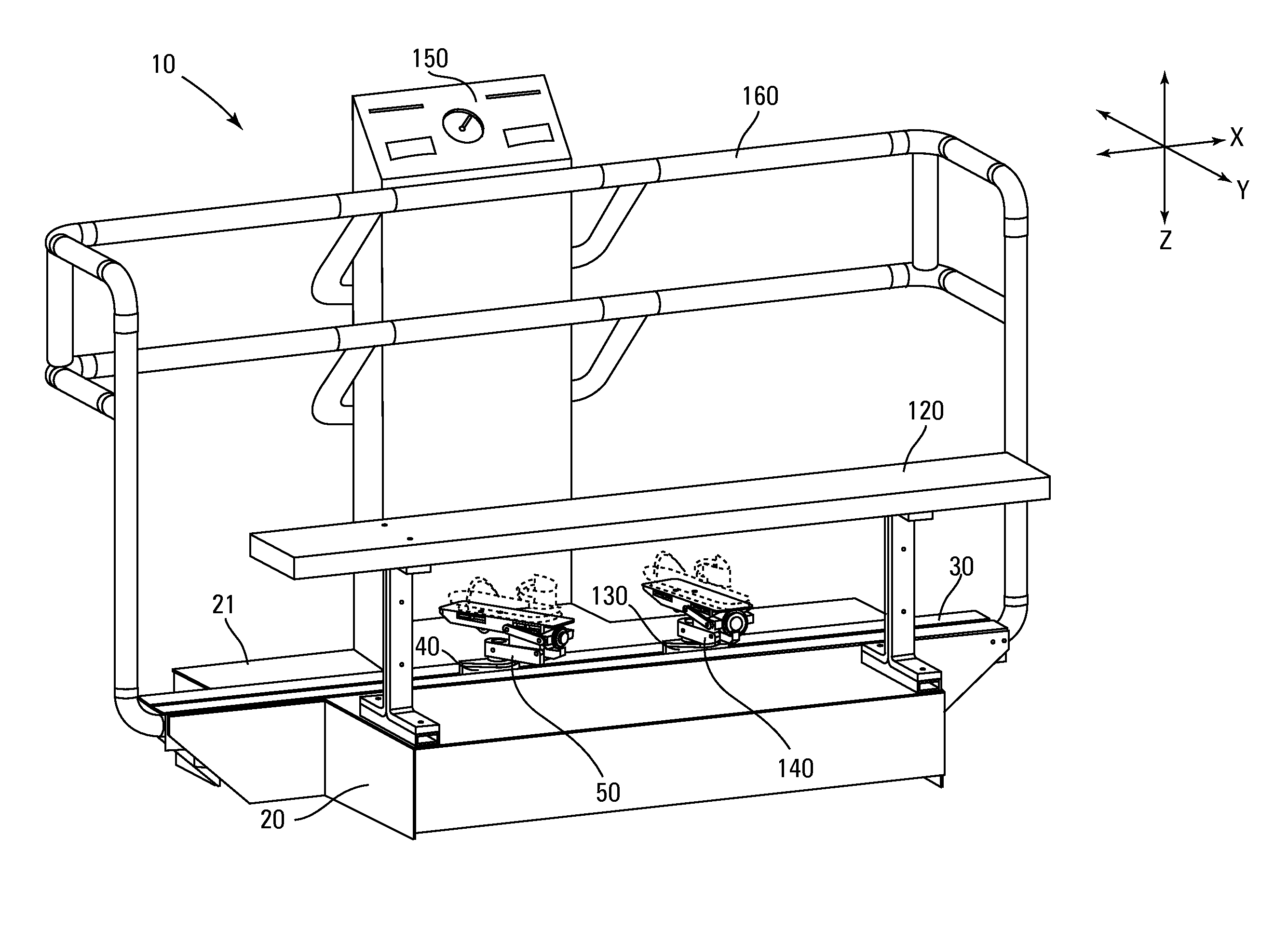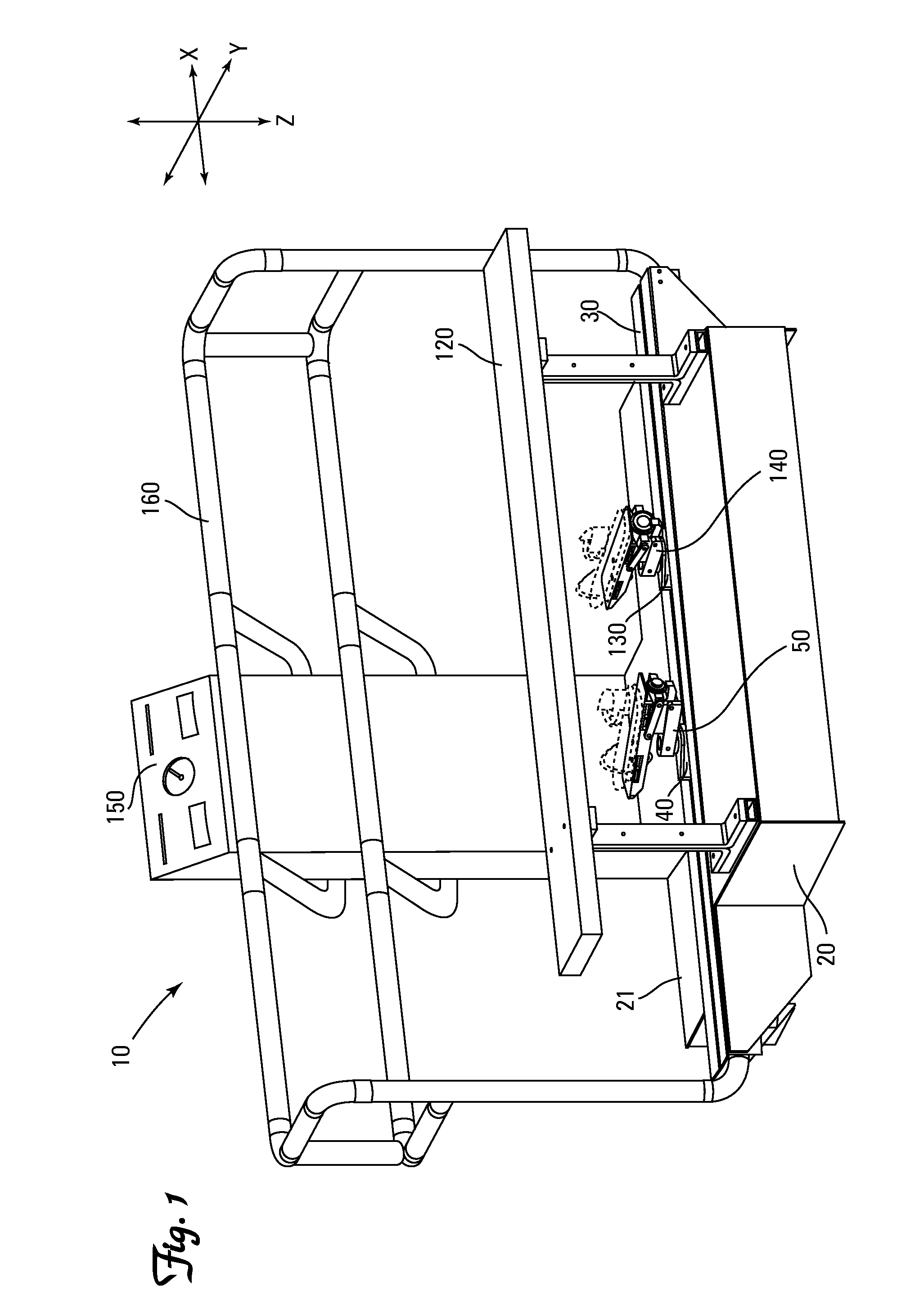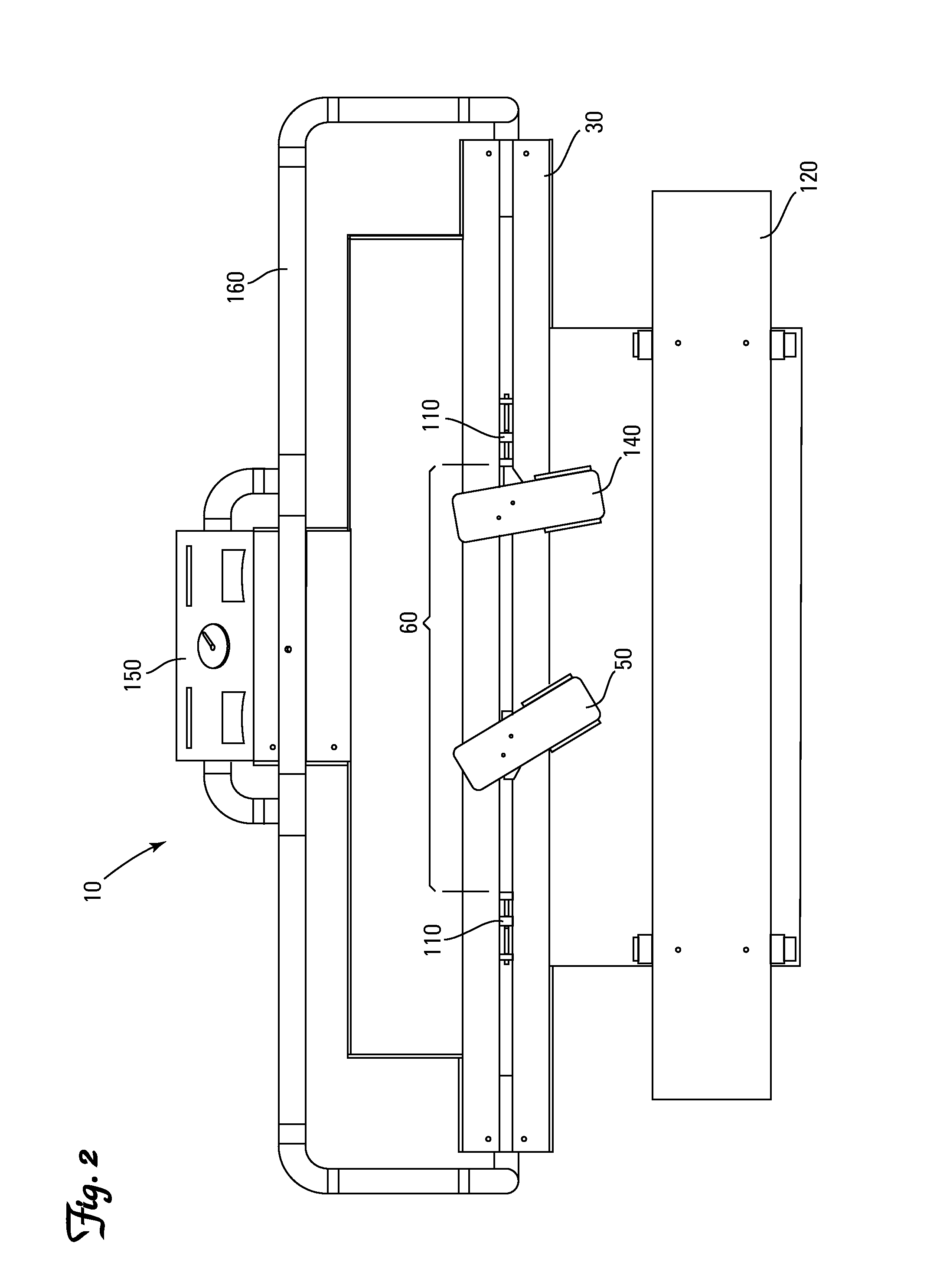Skating simulator
a simulator and skating technology, applied in the field of skating, can solve the problems of inability to replicate the biomechanically correct position of the ankle pronation and supination of the ankle seen in the simulator, and the individual's ability to bring his/her feet,
- Summary
- Abstract
- Description
- Claims
- Application Information
AI Technical Summary
Problems solved by technology
Method used
Image
Examples
first embodiment
[0144]As shown in FIGS. 7-9, the foot pedal 50 pivotally attaches the foot plate base 52a of the foot pad 52 to an intermediate member 51 for pivoting about a primary lateral axis Y1 and reciprocating in the longitudinal direction X relative to a secondary lateral axis Y2. Preferably the pivot connection (not numbered) is proximate the toe end 56 of the first foot pedal 50. Most preferably the pivot connection is proximate the placement of the ball of the foot on the first foot pedal 50. As shown in FIG. 7, the preferred intermediate member 51 is a piston to allow reciprocating in the longitudinal direction X and rotation about a longitudinal axis X1. A restriction link 54 is pivotally attached to the foot pad 52 proximate the heel end 57 of the foot pad 52 and the intermediate member 51 for pivoting about the secondary lateral axis Y2.
[0145]As shown in FIG. 7, the intermediate member 51 is attached to a base member 53. Preferably the intermediate member 51 is pivotally attached to ...
second embodiment
[0147]As shown in FIG. 17, the foot pedal 250 has a foot pad 252 attached to a longitudinally extending cam 254. The intermediate member 251 is attached to at least one cam roller 255. The cam roller 255 reciprocates in the longitudinal direction X and transverse direction Z along the cam 254. Preferably the cam 254 has a longitudinally extending non-circular arcuate opening 253 through the center (not numbered) of the cam 254. The intermediate member 251 may have a cam roller 255 reciprocating in the longitudinal direction X and transverse direction Z along the non-circular arcuate opening 253 through the center of the cam 254 and one or more additional cam rollers 255 reciprocating in the longitudinal direction X and transverse direction Z along the outer edge (not numbered) of the cam 254.
third embodiment
[0148]As shown in FIG. 18, the foot pedal 350 has a foot pad 352 pivotally attached to a cam roller 355 proximate the toe end 352a of the foot pad 352. A cam 354 is attached to the intermediate member 351. The cam roller 355 reciprocates along an outside edge (not numbered) of a cam 354 in a longitudinal direction X and transverse direction Z. A restriction link 353 is pivotally attached to the foot pad 352 proximate the heel end 352b of the foot pad 352 and pivotally attached to the intermediate member 351 for pivoting about a lateral axis YA.
PUM
 Login to View More
Login to View More Abstract
Description
Claims
Application Information
 Login to View More
Login to View More - R&D
- Intellectual Property
- Life Sciences
- Materials
- Tech Scout
- Unparalleled Data Quality
- Higher Quality Content
- 60% Fewer Hallucinations
Browse by: Latest US Patents, China's latest patents, Technical Efficacy Thesaurus, Application Domain, Technology Topic, Popular Technical Reports.
© 2025 PatSnap. All rights reserved.Legal|Privacy policy|Modern Slavery Act Transparency Statement|Sitemap|About US| Contact US: help@patsnap.com



